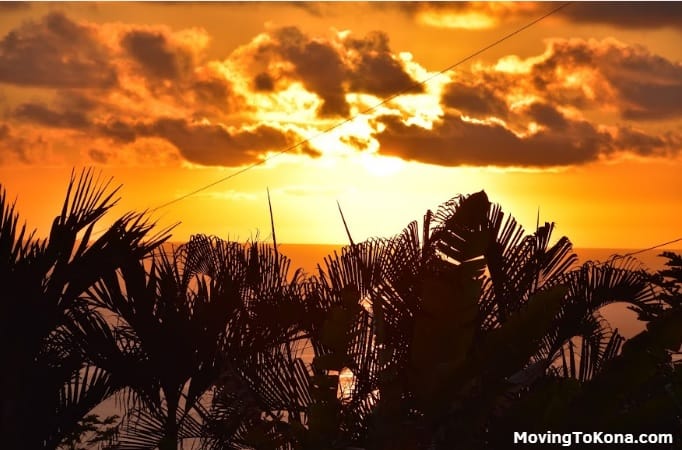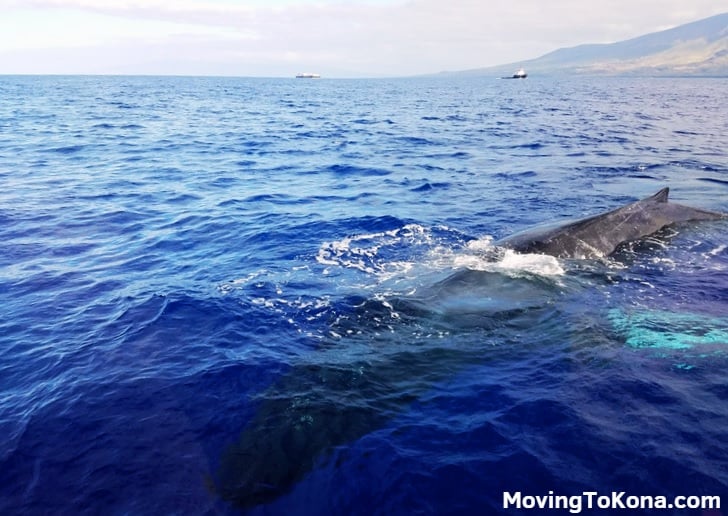What is the Best Time to Visit Hawaii?

What is the Best Time to Visit Hawaii?
Hawaii is a year-round destination, but the best time to visit depends on what you want to do and see. The shoulder seasons of April-May and September-October are generally considered the best time to visit Hawaii. During these months, you can expect warm and sunny weather with occasional showers, calm surf, and fewer crowds. The temperatures are milder in spring, making it ideal for outdoor activities like hiking and whale watching. Summer, from June to September, is the peak tourist season, with the warmest temperatures and the most crowded beaches. If you’re looking to soak up some sunshine and relax on the beach, this is the best time to visit. However, prices are higher, and you’ll need to book well in advance. Fall and winter, from October to March, offer more moderate temperatures, making it perfect for exploring Hawaii’s cultural and entertainment offerings. December through February are the best months weather-wise, but they’re also the busiest due to winter break for many schools across North America. Ultimately, the best time to visit Hawaii depends on your personal preferences and travel plans.

What Factors Should You Consider When Planning Your Trip to Hawaii?
1. Destination
When planning a trip to Hawaii, there are several essential factors to consider to ensure a memorable experience. Firstly, it’s crucial to consider the various destinations in Hawaii, each with unique features that make them stand out. Some of the popular destinations include Oahu, Maui, Kauai, and the Big Island. Oahu is famous for its bustling city life and beautiful beaches, while Maui is renowned for its scenic drives and stunning natural beauty. Kauai is known for its lush greenery and breathtaking landscapes, and the Big Island is home to active volcanoes and picturesque waterfalls.
The best time to visit each destination in Hawaii varies depending on the location. For instance, the best time to visit Oahu is from April to June or September to mid-December, while the best time to visit Maui is from April to May or September to November. Kauai is ideal to visit from September to November, while the Big Island is best to visit from September to November or February to March.
There are various accommodation options in Hawaii, ranging from luxurious resorts to budget-friendly hotels and Airbnb rentals. Tourist attractions in Hawaii include beaches, waterfalls, national parks, and cultural centers. Activities to engage in while on the island include surfing, hiking, snorkeling, and visiting historic sites such as Pearl Harbor.
In conclusion, when planning a trip to Hawaii, it’s essential to consider the various destinations, the best time to visit, available accommodation, tourist attractions, and activities to engage in. By taking these factors into consideration, travelers can create an itinerary that ensures an unforgettable experience in Hawaii.
2. Season
Hawaii has two peak tourist seasons: winter and summer. Winter is popular among snowbirds, and summer is the time when families visit Hawaii when children are out of school. The shoulder seasons, which are April, May, September, and October, offer cheaper prices and great weather with many activities to do. In winter, visitors can watch the humpback whales, surf on the North Shore, or attend the Honolulu Marathon. Summer is perfect for snorkeling, swimming, and hiking. In spring and fall, visitors can enjoy the beautiful beaches, hike the lush trails, and explore the local culture. To prepare for the weather, visitors should pack light clothes, a rain jacket, sunscreen, and insect repellent.
3. Weather
Hawaii experiences warm and tropical weather all year round, with the summer months being the driest and warmest. Winter months tend to be rainier, but the showers are usually localized and don’t last long. Late winter brings good news for budget travelers as discounts on airfare and hotels are available, and popular attractions are less crowded. Spring weather is cool and comfortable, making it perfect for outdoor adventures. Regardless of the season, Hawaii offers a lush tropical experience. When planning your trip, consider the weather patterns and your preferences for crowds, budget, and outdoor activities. Keep in mind that every island has farmers’ markets, offering fresh tropical fruits that are still in season during the winter months. With this information, you can make an informed decision on when to visit Hawaii based on your preferences.
4. Events
Hawaii hosts a variety of events throughout the year, ranging from cultural festivals to outdoor activities. The Honolulu Festival, held in March, is a celebration of the city’s diverse cultures, featuring live music, dance performances, and a grand parade. In April, the Merrie Monarch Festival showcases the art of hula with a week-long competition in Hilo. The Kona Coffee Cultural Festival, held in November, celebrates the history and culture of coffee in Hawaii with tastings, tours, and live music. The Hawaii Food and Wine Festival, also in November, features top chefs from around the world and highlights local ingredients. Outdoor enthusiasts will enjoy the Maui Marathon in October, or the Ironman World Championship in Kona in October. When planning your trip, consider the crowds that these events may attract, as well as any potential disruptions to transportation or accommodations. However, attending these events can provide a unique and enriching experience for visitors to Hawaii.
5. Cost
The cost of visiting Hawaii varies depending on the time of year due to a variety of factors, including peak tourism seasons and weather patterns. According to data from over 30 insurance providers, the peak season for travel to Hawaii is typically from mid-December to mid-April, with prices for flights and accommodations being significantly higher during this time. However, visiting during the off-season, which is typically from April to November, can result in significant savings. Additionally, weather patterns can affect the cost of visiting Hawaii, with hurricane season occurring from June to November, which can result in reduced demand and lower prices. (Click here to find out how to prepare for a hurricane in Hawaii.) Overall, travelers looking to save money on their trip to Hawaii should consider visiting during the off-season and being flexible with their travel dates to take advantage of the best deals.
6. Activities
Hawaii is a paradise for outdoor enthusiasts, with a range of activities available year-round. One of the most popular activities is hiking, and there are plenty of trails to explore throughout the islands. The Diamond Head State Monument on Oahu is a must-visit for hikers, offering stunning views of the ocean and the city of Honolulu. Another popular activity is surfing, which can be enjoyed year-round, with the waves being more consistent during the winter months. Snorkeling and scuba diving are also popular, with the warm waters and abundant marine life making Hawaii one of the best places in the world for underwater exploration.
In addition to these year-round activities, Hawaii offers a range of seasonal activities that are affected by the changing weather patterns. For example, whale watching is a popular activity during the winter months, when humpback whales migrate to the warm waters of Hawaii to breed and give birth. During the summer months, visitors can enjoy activities such as kayaking, stand-up paddleboarding, and beach volleyball. The summer is also a great time to explore the many state and national parks throughout the islands, with the dry weather making hiking and camping more enjoyable.
7. Lodging
When planning a trip to Hawaii, choosing the right lodging can make all the difference. There are a variety of accommodations available, including hotels, resorts, vacation rentals, and bed and breakfasts.
Hotels and resorts offer a range of amenities and services, such as pools, restaurants, and spas. They are typically located in popular tourist areas and provide easy access to nearby attractions. However, they can be expensive and may not offer as much privacy as other options.
Vacation rentals, such as houses and apartments, provide more space and privacy than hotels and resorts. They are often located in residential areas and offer the opportunity to experience local culture. However, they may not offer the same level of amenities and services as hotels and resorts.
Bed and breakfasts provide a more personal and intimate experience. They are typically located in residential areas and offer home-cooked meals and personalized service. However, they may not offer as many amenities as hotels and resorts.
To find the best deals on lodging, consider booking in advance and using websites that offer discounts and special offers. Additionally, be flexible with your travel dates and consider traveling during the off-season when prices are lower.
In conclusion, when choosing lodging for your trip to Hawaii, consider your budget, location preferences, and desired level of privacy and amenities. Do your research, compare prices, and book in advance to ensure you find the best option for your needs and budget.
8. Car Rental
Renting a car in Hawaii is a great way to explore the islands at your own pace. To rent a car in Hawaii, you will need a valid driver’s license and a credit card. Most car rental companies require drivers to be at least 21 years old, although some companies may have higher age requirements. Some companies also require an additional fee for drivers under 25 years old. The best car rental companies in Hawaii include Alamo, Avis, Budget, Enterprise, Hertz, and National. The average cost of renting a car in Hawaii varies depending on the type of vehicle, the rental company, and the time of year. On average, expect to pay around $50 per day for a basic car rental. To navigate Hawaii’s roads, be sure to follow the speed limits and watch out for one-lane bridges and narrow roads. Also, keep in mind that parking can be challenging in popular tourist areas.
9. Airports
Hawaii is a popular tourist destination that offers a variety of airports for visitors to choose from. The largest airport is Honolulu International Airport, located on the island of Oahu. It is the main gateway to Hawaii and serves as a hub for inter-island flights. Maui’s Kahului Airport is the second largest airport and serves as the primary airport for the island of Maui. Kona International Airport is located on the west coast of the Big Island and is the main airport for visitors to the Kona side of the island. Hilo International Airport is located on the east coast of the Big Island and is the main airport for visitors to the Hilo side of the island. Each airport has its own advantages and disadvantages. Honolulu International Airport is the most accessible and has the most transportation options but can be crowded and busy. Kahului Airport is convenient for visitors to Maui but can have limited flight options. Kona International Airport is convenient for visitors to the Kona side of the Big Island but can have limited flight options as well. Hilo International Airport is convenient for visitors to the Hilo side of the Big Island but is a smaller airport with limited flight options.
10. Attractions
Hawaii is a popular vacation destination year-round, with each season offering unique attractions. In the summer, visitors can enjoy the beaches and water activities, such as surfing and snorkeling, in places like Waikiki Beach and Hanauma Bay. During the winter months, the focus shifts to watching the humpback whales migrate to the warm waters around Maui and the Big Island. For those interested in culture and history, the Pearl Harbor National Memorial and the Polynesian Cultural Center are must-see attractions. The volcanic landscapes of Hawaii Volcanoes National Park and Haleakala National Park are also top picks for visitors. Finally, there’s no better way to end the day than watching the sunset at the iconic Waikiki Beach or taking a relaxing dip in the natural hot springs of Ahalanui Park.

